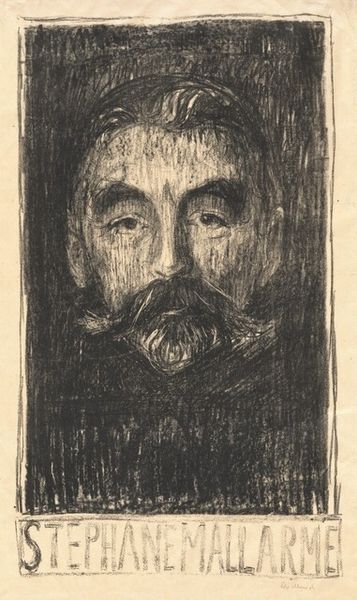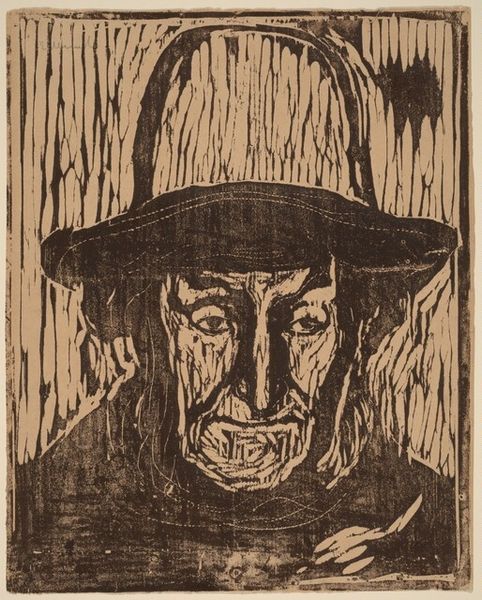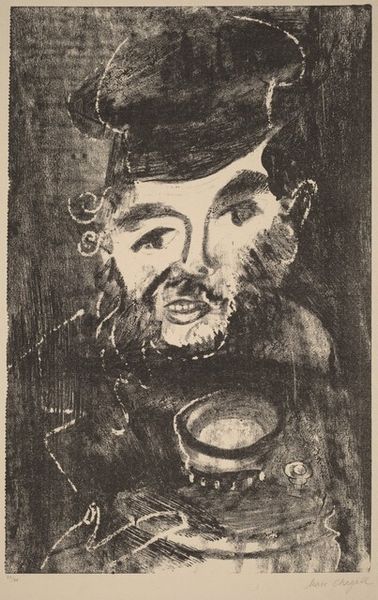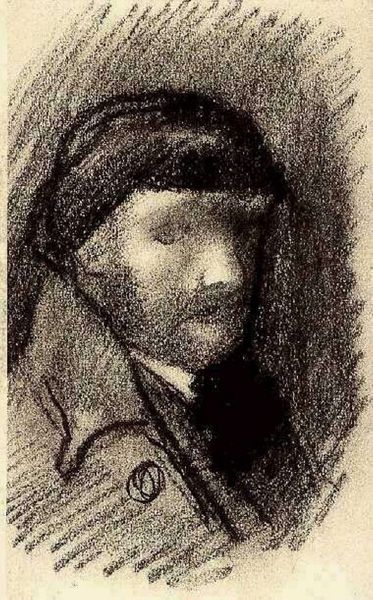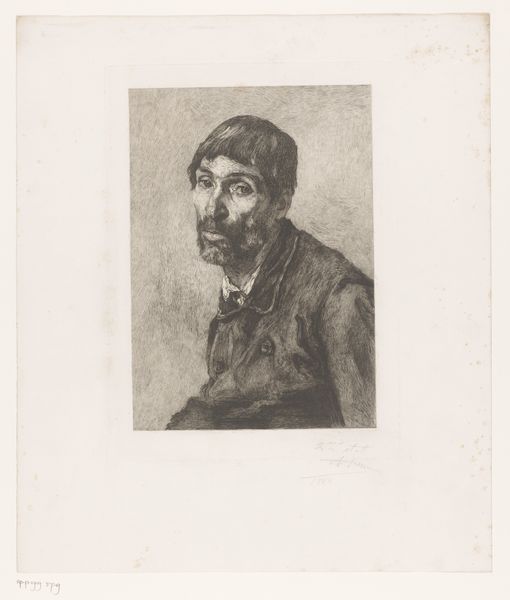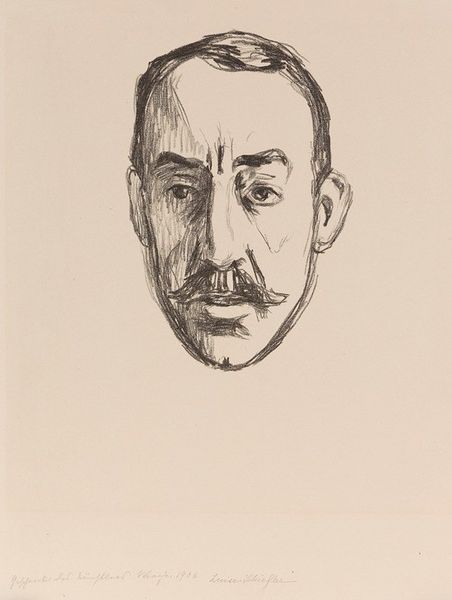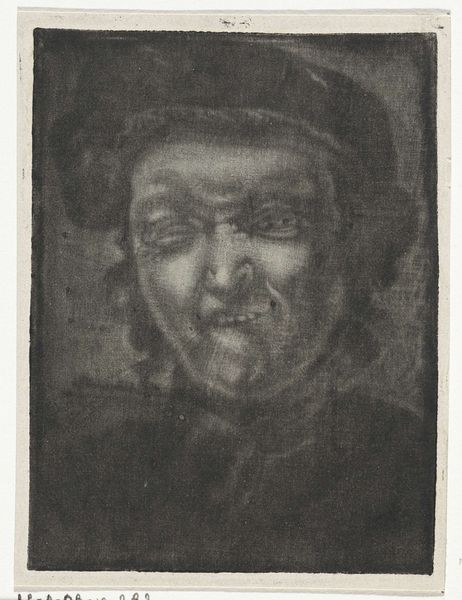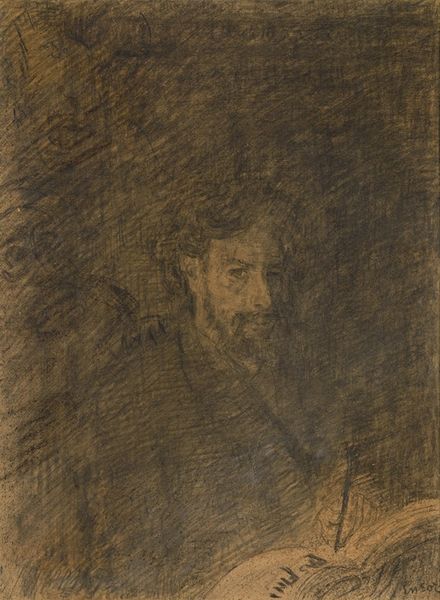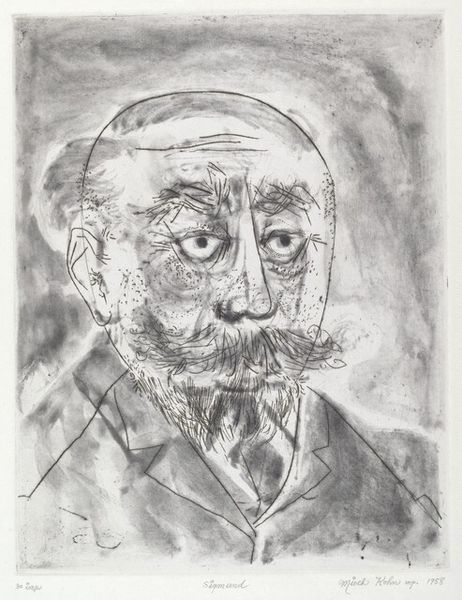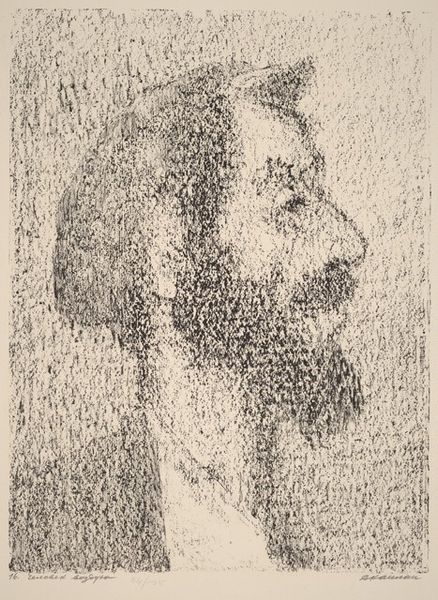
graphic-art, print
#
graphic-art
# print
#
realism
Copyright: National Gallery of Art: CC0 1.0
Curator: Anatoli Kaplan's "Motel," created between 1957 and 1961, strikes me. A study in contrasts and muted intensity rendered as a print. What are your immediate thoughts? Editor: Wow, those eyes. Wide, a little wild. Like he’s seen some things, maybe too many things, happen in that motel. Makes you wonder, what's the story? What did he witness through those very wide open eyes? Curator: That sense of witness is palpable, particularly when considering Kaplan’s life. He worked under Stalin's oppressive regime, yet he persisted as an artist. Realism, in this context, functions almost as a quiet rebellion, a refusal to look away. The weight of historical context casts its own shadow here. Editor: Rebellion, sure, but it also feels deeply human. There's a vulnerability. It's grainy. Like memory itself. The soft strokes hint to something unspoken. Is it the solitude of the figure or just the composition? I am lost a little. Curator: The pointillist style amplifies the feeling of something slowly pieced together, or perhaps, conversely, dissolving before our eyes. The figure becomes emblematic of those overlooked lives residing on the fringes, the forgotten and the unseen. I also cannot forget this was created when state censorship policies in the USSR significantly shaped and restricted artistic expression. Editor: I get the censorship implications, that's interesting. To me it still feels so present. And lonely, incredibly lonely, like those late-night stays in anonymous motels that we've all probably experienced in different forms. Curator: Solitude definitely emerges as a theme. The artist, the outsider, and maybe the traveler too are reflected. There's also the concept of liminal spaces in life, existing between the familiar and unknown, mirrored in the unsettling atmosphere captured here. The artwork encourages empathy, recognizing the commonalities that bind us. Editor: Well said. So it's not just about seeing; it’s about recognizing ourselves in what’s being witnessed. It might change how I treat the next night clerk I meet. Curator: Perhaps understanding "Motel" as not merely an image but as an invitation towards empathy offers a new framework in how we engage each other. Art creates that very dialogue between past, present and the future that we aim to be. Editor: Here's to many new dialogues. Now, who needs coffee? My eyes feel about as wide as his!
Comments
No comments
Be the first to comment and join the conversation on the ultimate creative platform.
